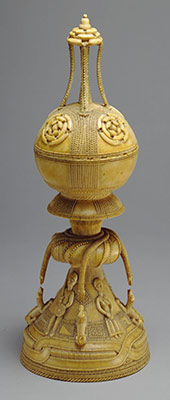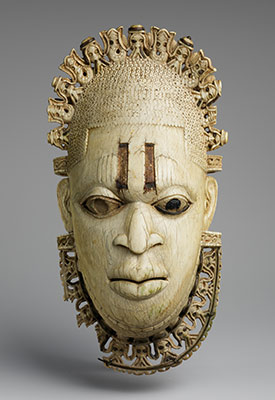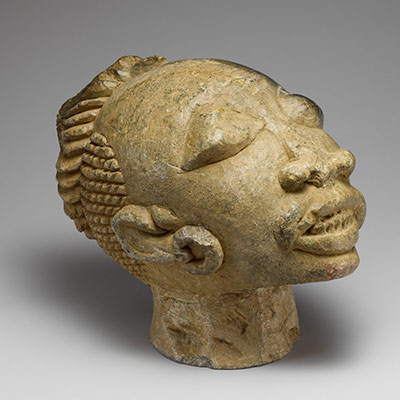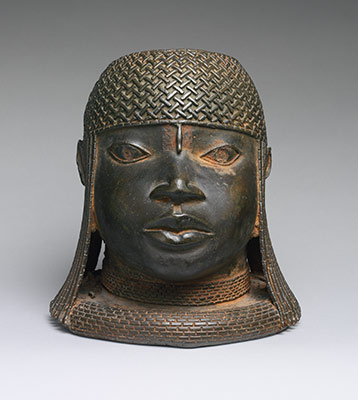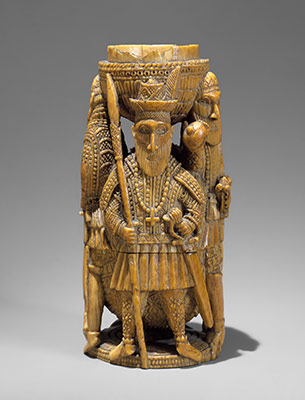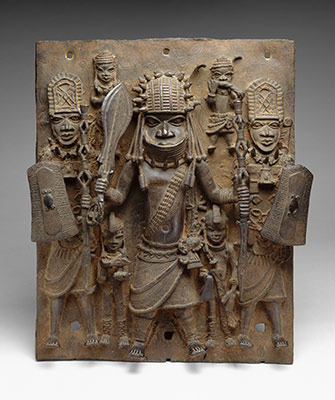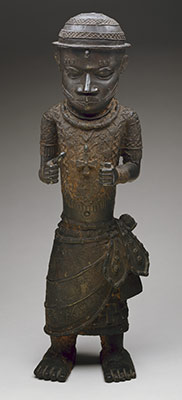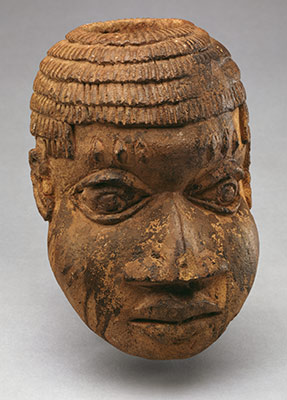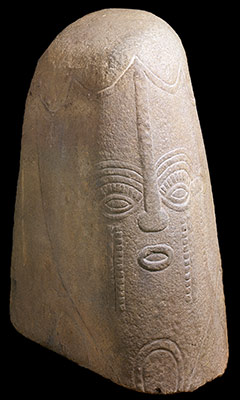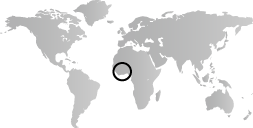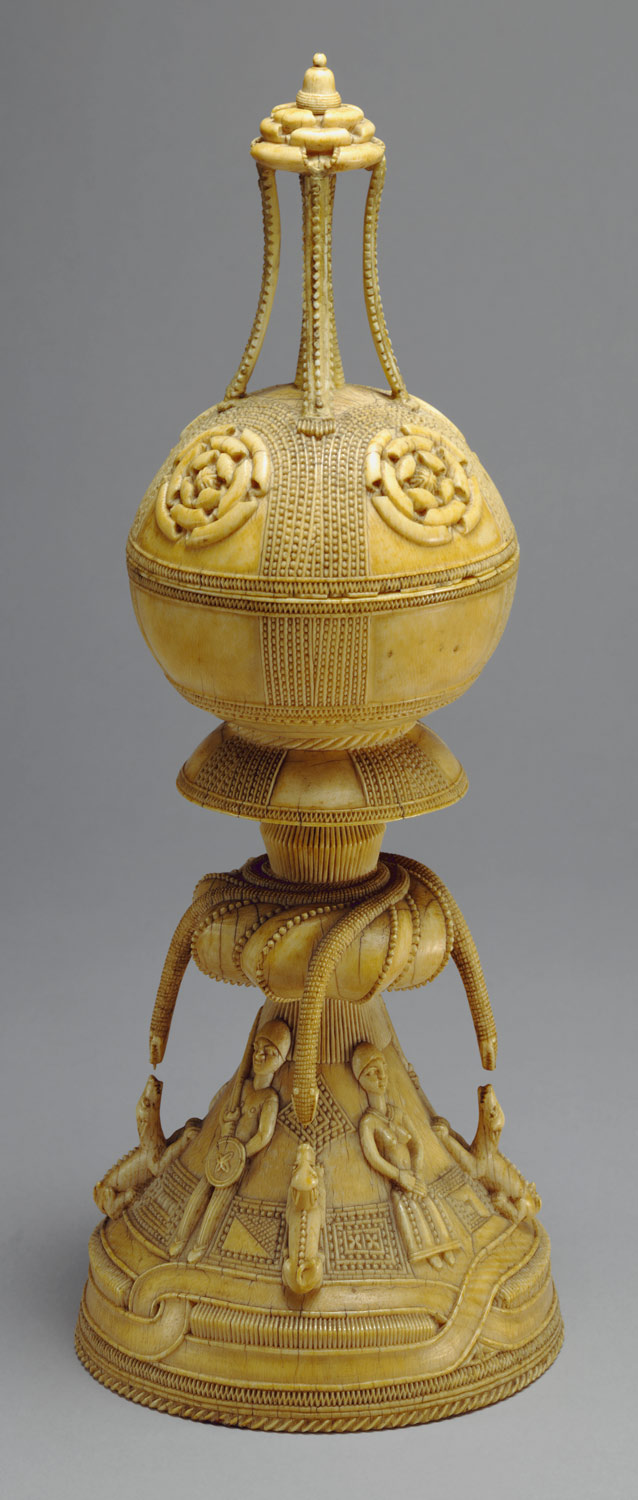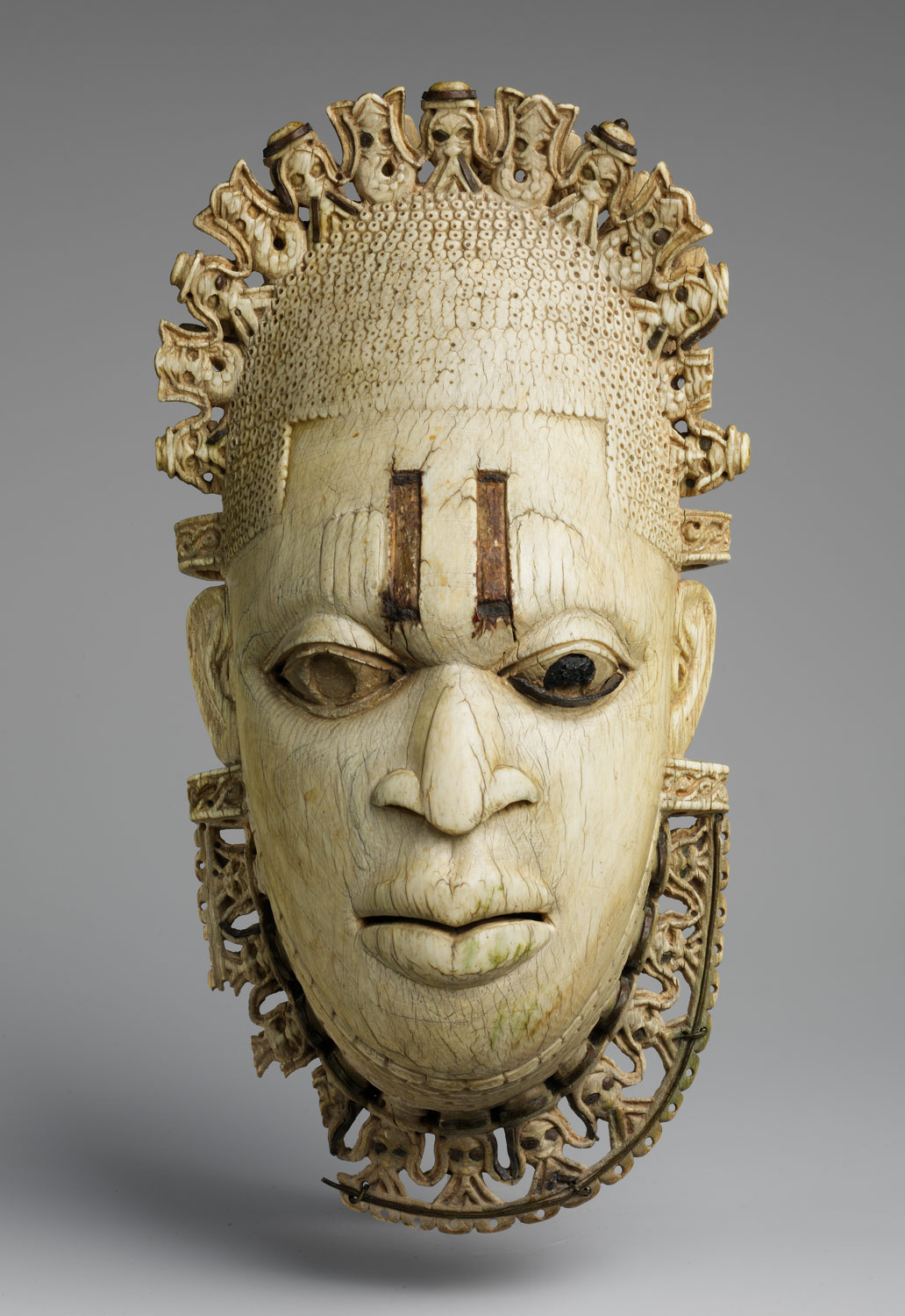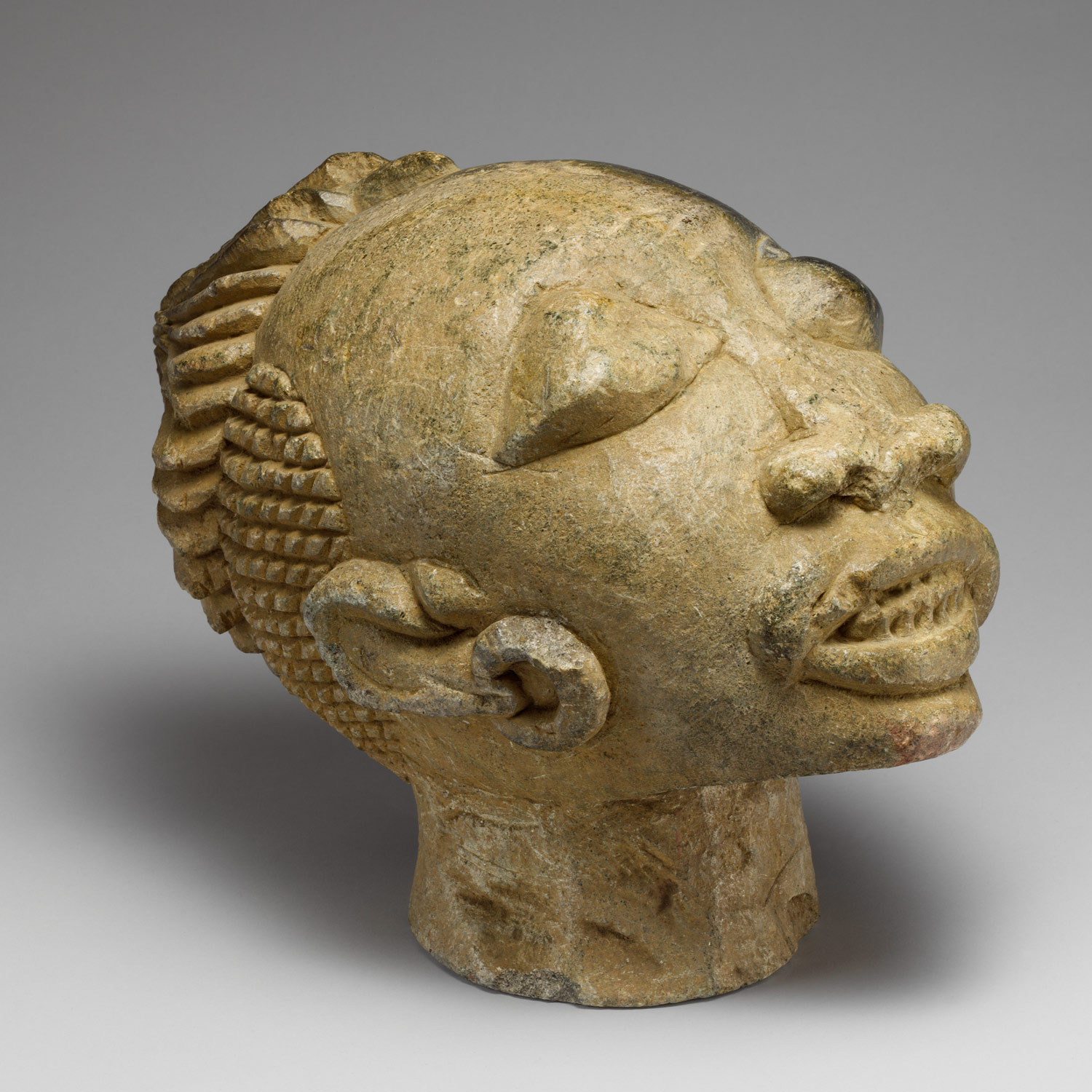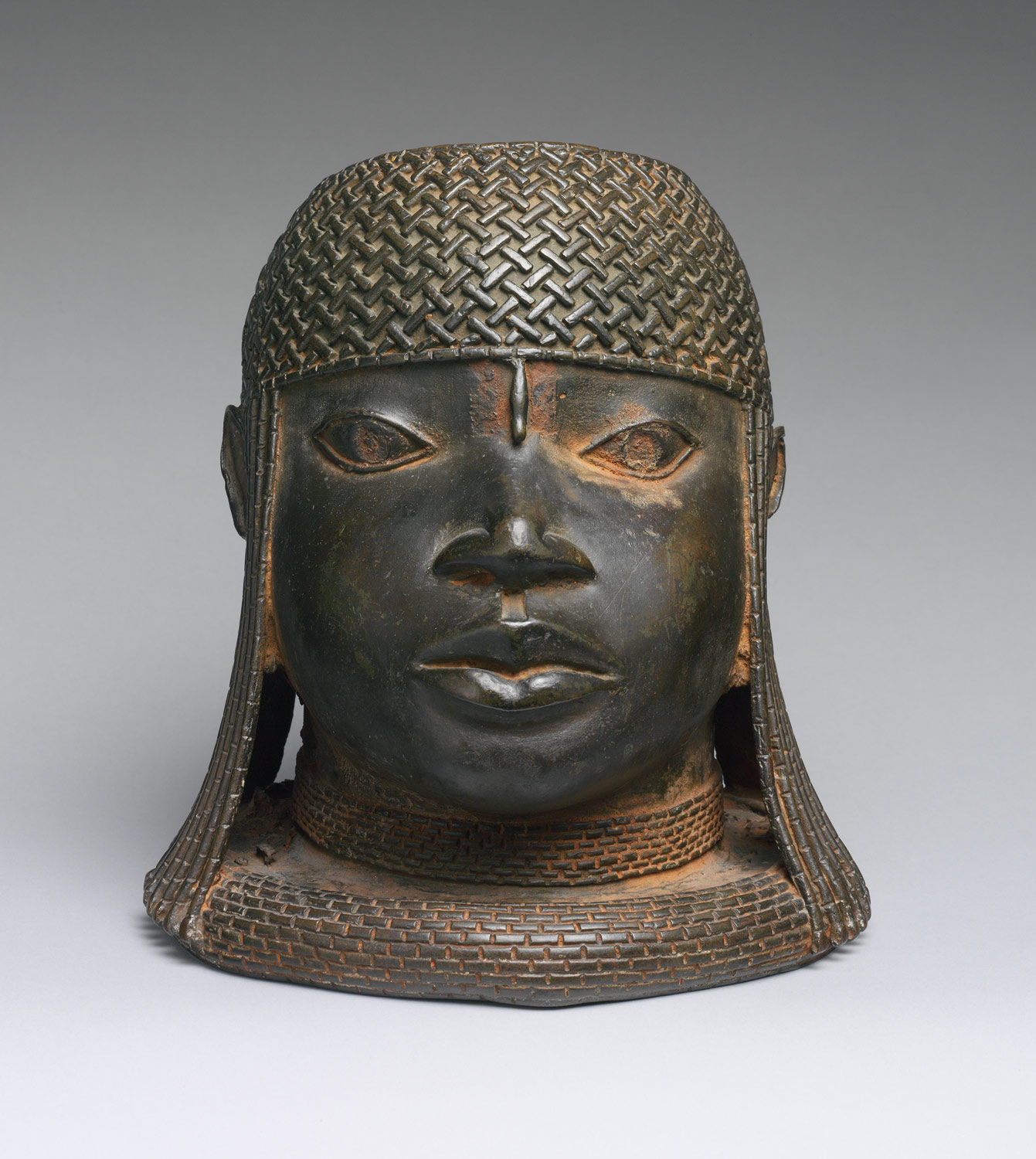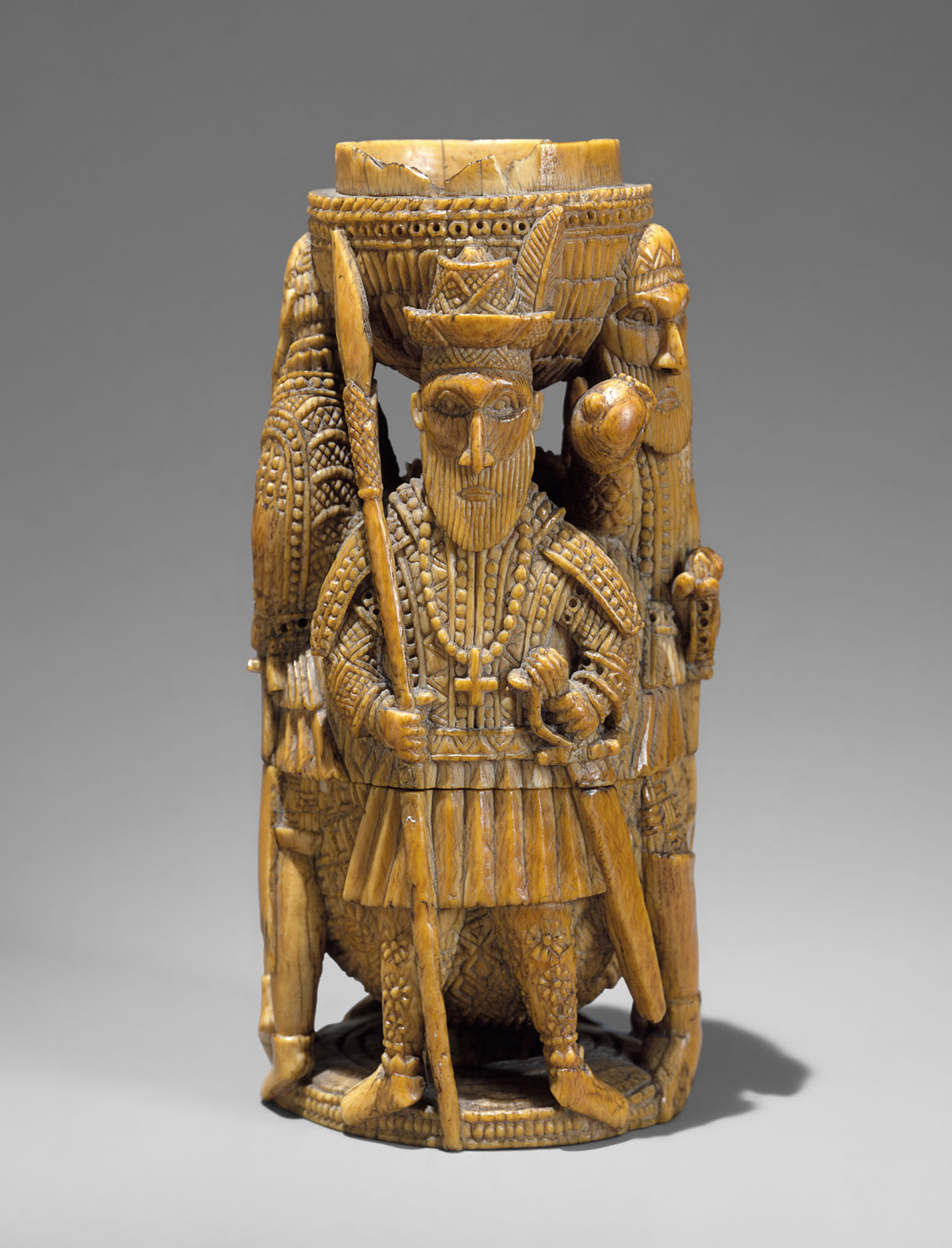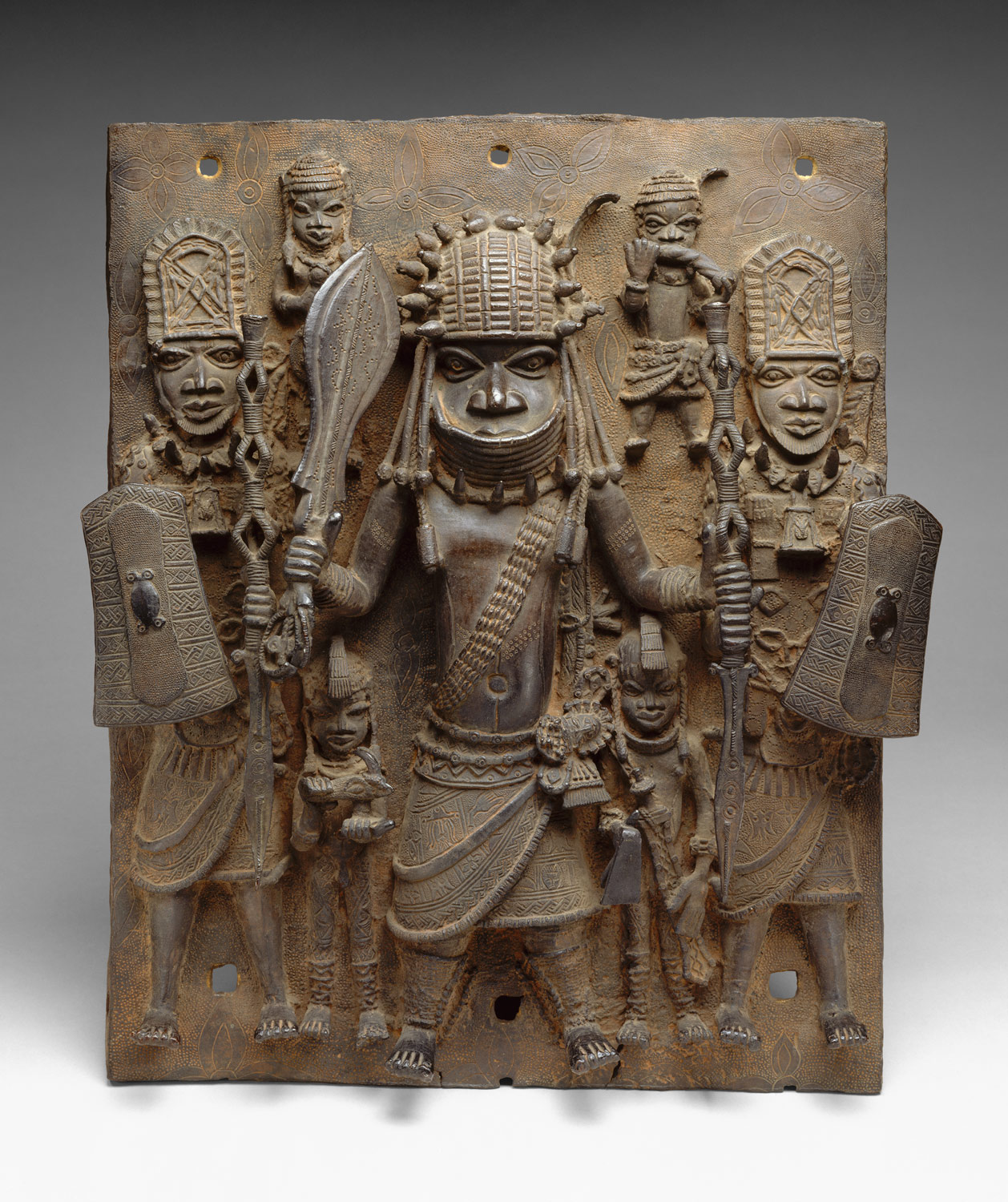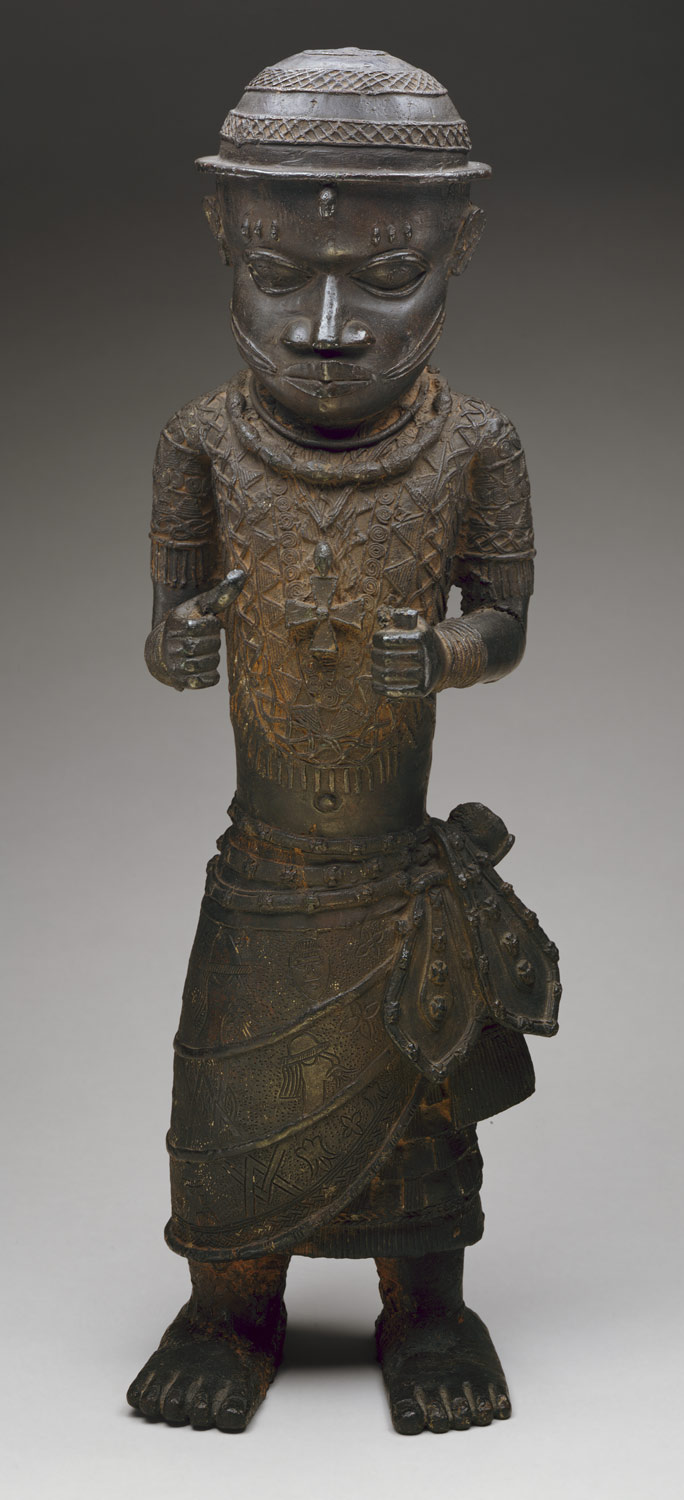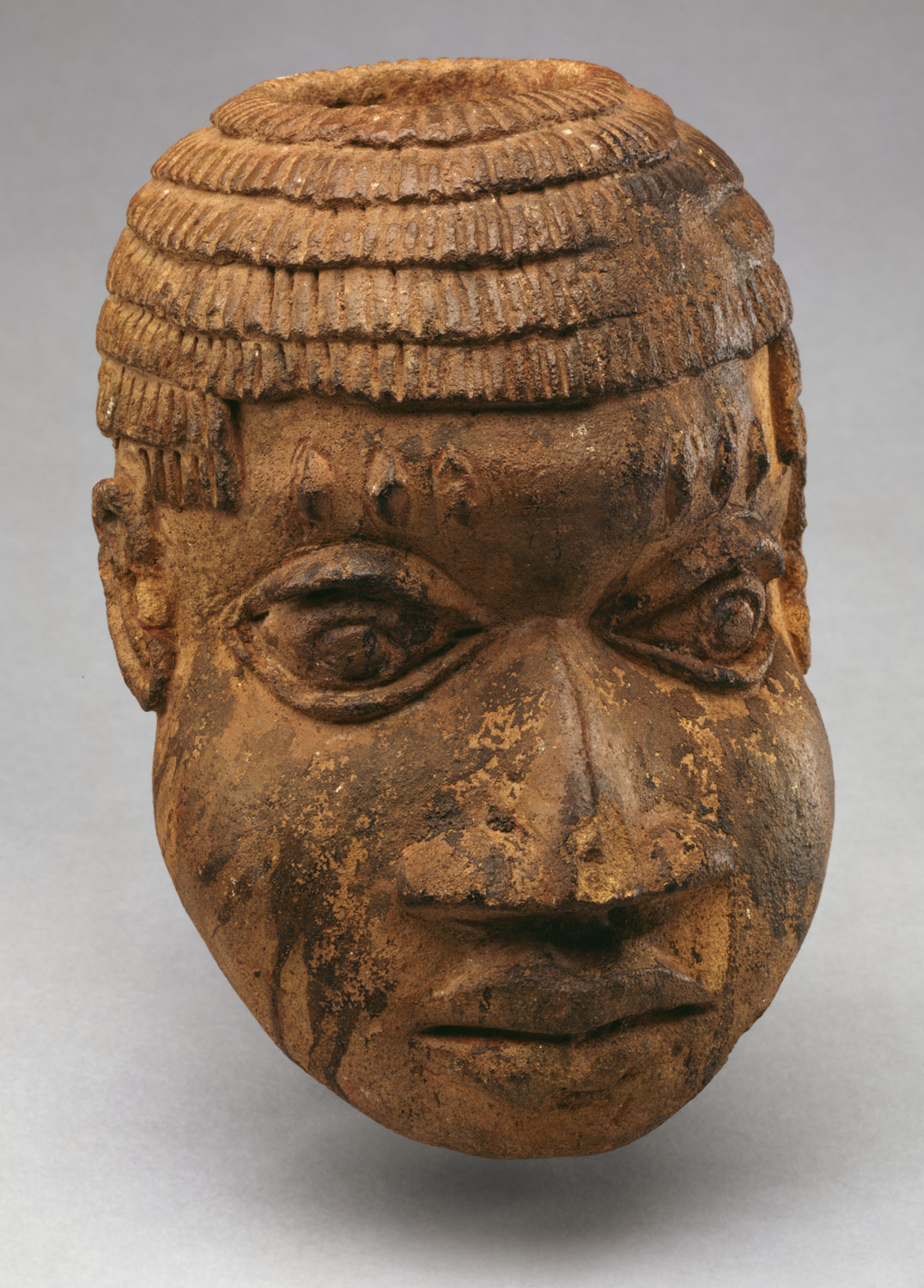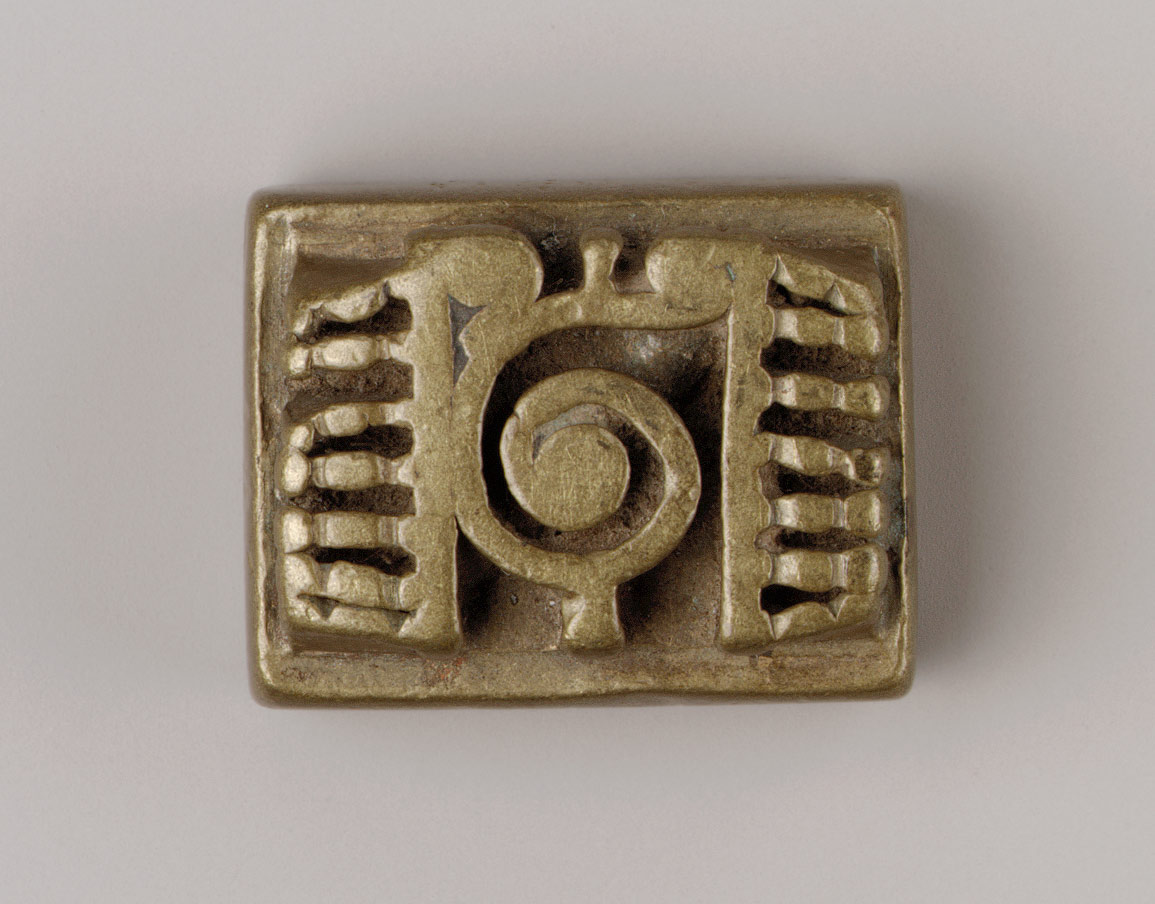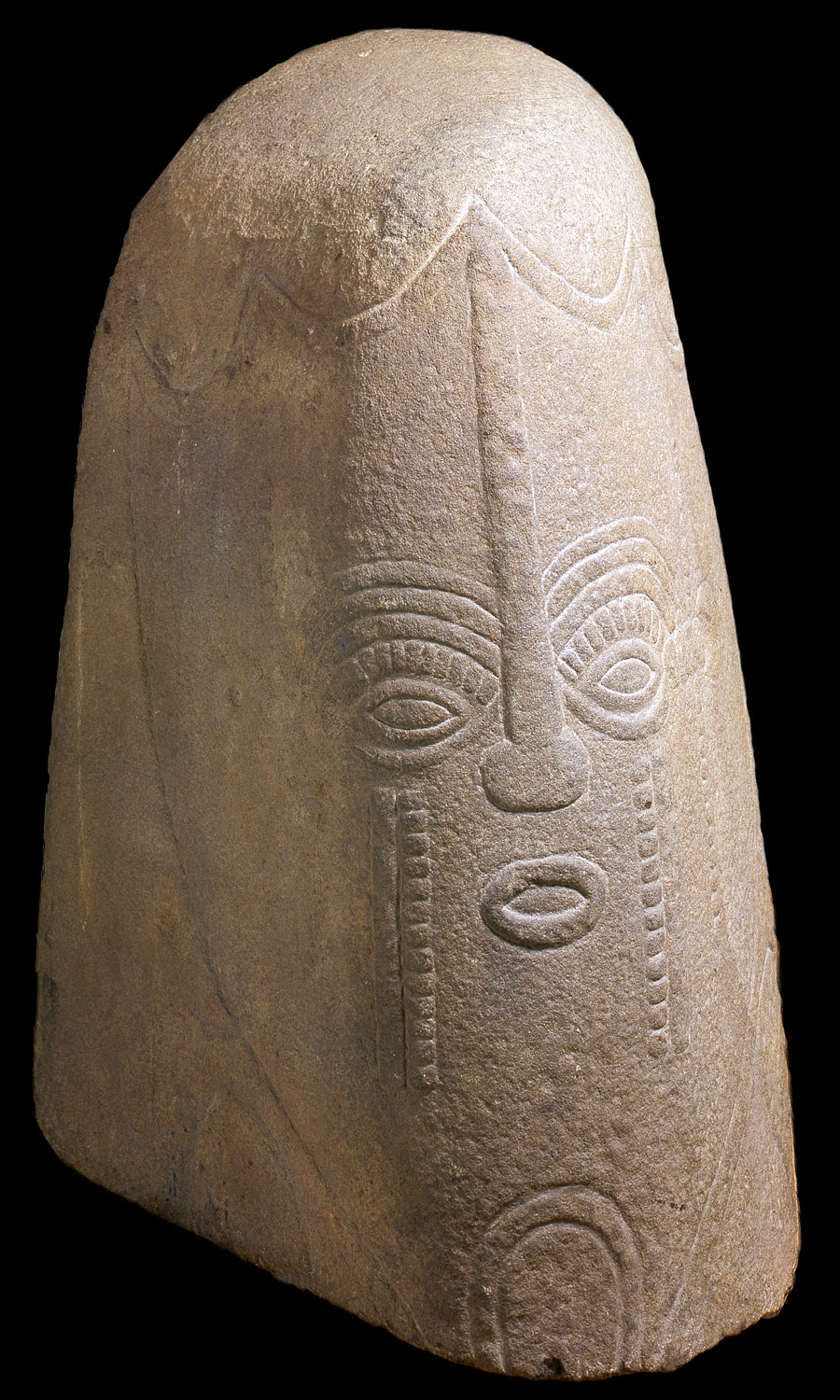The increase in size, centralization, and prosperity of the Owo and Benin kingdoms during this period is partially the result of their participation in trans-Saharan trade routes and trade with the Portuguese. Artistic production responds to refinements in metallurgic technologies and an intensified use of symbolic and ritualistic emblems of kingship. Artists of the Guinea coast are influenced aesthetically through contact with Islamic traders and the Portuguese, who often directly commission the carving of ivory objects. Additionally, the Akan (in what is now Ghana) develop an elaborate system of cast brass gold weights to measure the precious gold dust being traded to North Africa and then to Europe; the design of these gold weights is heavily influenced first by abstract Islamic visual motifs and later indigenous Akan aesthetics.
Guinea Coast, 1400–1600 A.D.
Timeline
1400 A.D.
1450 A.D.
1450 A.D.
1500 A.D.
1500 A.D.
1550 A.D.
1550 A.D.
1600 A.D.
Overview
Key Events
-
13th century–1897
The royal court of Benin is believed to have originated in the thirteenth century. According to Edo oral tradition, the kingdom was governed by the thirty-one “Rulers of the Sky,” or Ogiso kings. The Ada ceremonial sword, which in contemporary Benin court ritual remains an important emblem of kingship, is believed to date to this period. Eweka I, who may have been from the neighboring Yoruba dynasty, is the first Benin oba (king), succeeding the Ogiso kings around 1300. Eweka’s authority is undermined by conflict with autochthonous chiefs.
-
1350–1400
Oba Ewedo of the kingdom of Benin reorganizes the system of leadership, constructing a new palace and recruiting palace chiefs to serve him. He introduces new insignia of leadership, including the Ada ceremonial sword, and mandates that all chiefs, including those who challenged the authority of his predecessors, stand in his presence. Additionally, he reserves the right to confer titles, therefore maintaining control over the most powerful political tool in the kingdom.
-
14th–mid-16th century
The bronze and terracotta sculptures produced at Ile-Ife, one of the largest and most famous of the Yoruba cities, are considered some of Africa’s most remarkable. During this period, Ile-Ife supports a complex urban infrastructure, governing a large number of surrounding Yoruba towns.
-
1450
Oba Ewuare introduces sweeping administrative changes at the Benin court and erects a new palace. Successful military campaigns against the Yoruba and Igbo increase the court’s power. Perhaps most importantly, Ewuare establishes new annual rituals and ancestral rights, further asserting the divine authority and spiritual powers of the Benin dynasty. Oba Ewuare is the first to wear the red coral ceremonial regalia, which has strong associations to Olokun, god of the sea.
-
1463–1499
The important Nigerian market city of Kano prospers under the leadership of the Hausa king Muhammad Rumfa. The fifteenth-century migration of the Fulani peoples to Hausaland brings a strong Muslim influence to the region and increases the Hausa people’s prosperous involvement in trans-Saharan trade. The Fulani also bring Arabian horses, which give the Hausa significant military advantage over powerful neighbors, whom they raid for agricultural products and other trade goods.
-
1485
Portuguese reach the Bight of Benin, finding the city of Benin to be as large, developed, and well organized as anything they know in Europe. The complex trading relationships and artistic exchanges that grow out of this first contact will determine Benin history for the next 200 years.
-
15th–16th century
The Benin Warrior Kings period is one of prosperity and state expansion. The military acumen and might of the Benin dynasty contributes to the early victories, increasing governmental centralization and wealth. The stability and power of the region spur the development of an elaborate court patronage system, with several artisan guilds. Artistic developments include refinements in the lost-wax brass casting technique and the first production of cast brass heads.
-
15th–16th century
The Yoruba city of Owo, one of the largest cities on the Guinea coast, established in the ninth century, flourishes in this period. The ornate Owo palace is believed to have extended over 108 acres. Owo prospers in part due to its location along the trade route connecting the cities of Ife and Benin.
-
15th–17th century
The rise of the Akan kingdoms in what is now Ghana coincides with the arrival of Muslim Dyula traders from the north. The Dyula bring cloth and metal wares to exchange for kola nuts and gold dust destined for North Africa. The gold trade necessitates development of the famous brass Akan gold weights, a systematized set of measures for weighing gold dust. Early weights display stylized foliate iconography developed from Islamic imagery, while later weights feature naturalistic renditions of objects from daily life or figures from Akan proverbs. When the Portuguese arrive in 1471, they insert themselves into this sophisticated system of exchange and trade firearms for gold dust and slaves. By the end of the seventeenth century, the imported guns allow the Akan kingdoms to dominate the slaves, and slaves replace gold as the region’s largest export.
-
1504–1550
Oba Esigie is known for his important military victories, the first in the power struggle with his brother Arhuaran over the succession to the Benin throne, and the next over the Ata of Idah, ruler of Igala. He is aided in both battles by the political strategy and occult power of his mother Idia. To thank her, Esigie establishes the court title of Queen Mother, Iyoba, giving her political authority equivalent to that of the senior town chiefs.
-
1540–17th century
The Nupe peoples from west central Nigeria capture the city of Owo and exile its dynastic leaders, who establish a new capital at Igboho. The new Owo leadership organize a standing, highly trained cavalry. Because their horses are decimated by tsetse flies, the cavalry must continually replenish supplies by trading textiles and iron products. Owo is fortuitously situated between the grassland trading routes of the northern savannas, connecting Timbuktu, Jenne, the markets of Hausaland, and the rainforests of the south. The development of Owo’s wealth and military strength shifts power from old Ife to the Owo kingdom.
-
1553
When the British arrive in the Igbo area of southern Nigeria in the sixteenth century, they find a democratic system of leadership existing in autonomous villages. The decentralized agrarian Igbo peoples, who had settled in the area in the ninth century, are protected geographically by large swamps from the militaristic expansionist kingdoms of northern Nigeria. In the place of centralized leadership, decisions are made at village congresses attended by all eligible Igbo citizens. The British develop trading relationships with the Igbo, exchanging European products for gold, ivory, pepper, and later slaves.
Citation
“Guinea Coast, 1400–1600 A.D.” In Heilbrunn Timeline of Art History. New York: The Metropolitan Museum of Art, 2000–. http://www.metmuseum.org/toah/ht/?period=08®ion=afg (October 2002)
